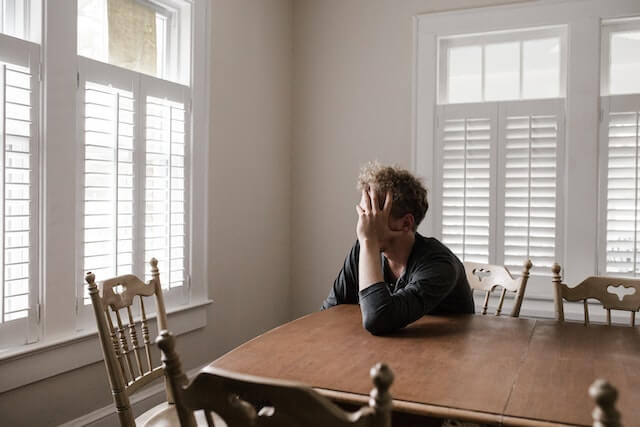Osteoporosis is a silent disease. Potential complications of osteoporosis are what make the disease fatal in its late stages.
A lot of people live with osteoporosis throughout their lives without suffering much of its complications while others suffer a lot.

What is osteoporosis?
The National Institute of Arthritis and Musculoskeletal and Skin Diseases defines osteoporosis as a bone disease that develops when the bone mineral density and the bone mass decrease, and there is a change in both the structure and strength of bone.
Before digging into the potential complications of osteoporosis, let us understand in brief how our bones are formed. Our bones are formed of collagen and calcium phosphate.
Collagen is responsible for the resilience of bone and making it able to absorb forces. Calcium phosphate is the mineral that is responsible for the strength of the bones and making them resistant to fracture.
Our bones are in a continuous process of remodeling in which the old bones are replaced by newer bones. This process is fast during the early stages of life till the bone mass reaches its full bulk at the age of 30.
After 30, the bone remodeling process begins to decrease gradually.
In osteoporosis the rate of forming newer bones occurs at lower levels than normal, making the bone fragile, brittle, and prone to fracture easily with any slight blow or fall, and so the body is at a risk of developing potential complications of osteoporosis.

Potential complications of osteoporosis
As we mentioned before osteoporosis is a silent disease which means that it has no or fewer symptoms ranging from decreased height and change of body posture as a result of fractured vertebrae.
Among the potential complications of osteoporosis are:
Limited body movement
People with osteoporosis suffer mainly from difficulty in movement as their body bone mass is weak and can't withstand their movement like it was before.
Those weak bones increase stress on the hips and bones leading to severe pain in these areas with minimum physical effort.
Weight gain
Gain weight occurs in people with osteoporosis as a result of their limited movement which leads to decreased physical activity. No activity means no movement and hence weight gain.
Developing new diseases
Developing heart diseases and diabetes can be considered indirect potential complications of osteoporosis as they are caused by the body weight gain that happened because of osteoporosis and not by osteoporosis itself.
Depression
Limited physical activity and the fear of fracturing any bone lead to self-isolation. Loneliness without doing the activities that you once loved to do, can alter your mental health and put you in a dark zone leading to depression.
The importance of guarding your mental health and seeking professional help from a psychiatrist can help you cope with this state with the least damage possible.
Pain
Pain is one of the worst potential complications of osteoporosis, fractured bones in osteoporosis are a very painful and debilitating process.
This pain accompanied by the fracture is persistent and needs strong painkillers to decrease its severity.
Bone fracture
Bone fractures in osteoporosis are common due to a slight blow or fall. Bone fractures occur mainly in the hip bones and the vertebrae. The process of healing of fractured bones is very difficult with a poor quality of formed bone.
Bone fractures in osteoporosis cause persistent neck and head pain, deformity in bones due to improper healing, and decreased height and stooped posture due to fractured vertebrae.
Hospital admission
In people with severe osteoporosis in which their bones are very brittle and fragile, they may need surgical intervention for the bone to heal and be supported.
Risks of osteoporosis
There are some factors and causes that may put you at a greater risk of developing osteoporosis together with the potential complications of osteoporosis aforementioned. Among them are
Age
The older you get, the more your bones become weak and more porous, and the more you become at risk of developing osteoporosis.
Gender
Women are at higher risk of osteoporosis than men as a result of decreased levels of estrogen at menopause.
Men who had prostatic cancer that led to the removal of the prostate gland are also at higher risk of osteoporosis due to the decreased testosterone hormone.
Steroid therapy
People who are on long-term steroid therapy are found to be at higher risk with higher potential complications of osteoporosis.
Family history
Osteoporosis is found to be inherited among family members.
Decrease in calcium and vitamin D levels
As we all know calcium is a mineral that is important for the formation of bones, calcium blood levels must be within their normal range in the blood to guide the process of bone remodeling.
The body needs vitamin D to absorb calcium inside our bones, any decrease in vitamin D levels below the normal values will affect in turn the amount of calcium absorbed and hence will lead to osteoporosis.
Body type
People who have small slender bodies are at higher risk of developing osteoporosis due to decreased body mass and hence bone density.

Prevention of osteoporosis
After shedding some light on the potential complications of osteoporosis and those who are at risk of developing the disease, let's learn how to prevent such a disease:
Calcium and vitamin D intake
People should make sure that they take their daily intake of calcium and vitamin D in order to keep them within their normal range in the blood. This intake comes from supplements in the form of multivitamins.
Food products that are rich in these 2 minerals like dairy products and fortified cereals, salmon and sardines with bones, dark leafy greens, and cod liver oils are also very important sources of calcium and vitamin D.
Exercise
Any physical exercise helps in making your body strong. Strength exercises combined with weight-bearing exercises help make your muscles and bones stronger and also help in keeping the balance of your body that protects you from any abrupt fall that may lead to bone fracture.
Summary
Osteoporosis is one of the diseases that occur mainly in old age. It affects the quality of life of the individual.
Care should be taken to avoid potential complications of osteoporosis in order to live a healthy life.
Professional medical care is advised if you develop one or more of its complications.
Read more about:


You must be logged in to post a comment.